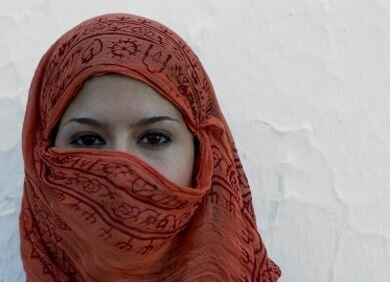No woman left behind
Featured, Health, Women — By Yalidy Matos on December 15, 2009 at 07:01CEDAW and the Stupak-Pitts Amendment
The United States is one of seven countries that have yet to ratify The United Nations (UN) Convention on the Elimination of all forms of Discrimination Against Women (CEDAW). Alongside the United States are Iran, Nauru, Palau, Tonga, Somalia and Sudan.[i] In summary, CEDAW addresses basic human rights of women and girls. It affords women equal access to resources such as education, employment, and property.
In addition, CEDAW is viewed as a way in which violence against women and girls can be reduced. The chronological history of CEDAW in the United States is as follows: first, Jimmy Carter signed CEDAW on July 17, 1980, it was sent to the senate committee, where conservatives held it, until it expired. Since then CEDAW has been sent to the Senate Foreign Relations Committee various times. In 1995, at the UN Fourth World Conference on Women, the U.S. made ratification of CEDAW a top priority and to be accomplished by 2000. However, 2000 came along and ratification had yet to occur.
Various US senators and representatives, along with US counties and cities have expressed support for CEDAW. In fact, San Francisco became the first city to pass a CEDAW implementing ordinance. In 2008, during his campaign President Obama declared strong support for the treaty; however, CEDAW remains without legal standing in the United States.
Although the Obama administration has emphasized the United States’ image internationally, the administration’s first 100 days have passed and various human rights treaties have yet to be ratified. But, the US House of Representatives has managed to pass the Stupak Amendment (240-194) as part of Obama’s health care reform.

courtesy of CEDAW Iran
The Stupak Amendment is quite contradictory to what CEDAW stands for, women’s agency and decision-making abilities. The amendment clearly states that no funds are to be authorized that may be used in paying for any abortions or parts of the cost, with a few exceptions such as rape, incest or a woman’s life.[ii] The amendment not only hinders women’s abilities to choose what is best for them, but it also hinders women’s ability to have health insurance.
Due to the fact that Stupak is part of the health care reform, if it passes, those who decide to “enjoy” the benefits of a “universal” health care do so at a high expense. Not to mention that the Stupak amendment can also affect women negatively, as some women may seek unsanitary and unhealthy abortion procedures, risking their lives.
In addition, those women who are disproportionately affected by this amendment are of course, middle- and low-income women of color. Hence, the amendment and the larger health reform seek to be universal, as it systemically continues to make invisible groups of women who have been historically and institutionally marginalized.
On the one hand, we have the Obama administration’s “promise” to make the United States’ international reputation a better one and the administration’s strong support for the ratification of CEDAW. On the other hand, we have amendments such as Stupak, which does not take into consideration the potential racist, and sexist consequences of its outcomes. Hence, women are the ones who are disproportionately affected by amendments and policies as such.
So, not only does the United States continue to stall the ratification of CEDAW, but it also continues to make vulnerable some women, primarily middle- and low-income women of color. According to the Guttmacher Institute, 37 percent of abortions occur to black women, 34 percent to non-Hispanic white women, 22 percent to Hispanic women and 8 percent to women of other races.[iii] In addition, “the abortion rate among women living below the federal poverty level ($9,570 for a single woman with no children) is more than four times that of women above 300% of the poverty level (44 vs. 10 abortions per 1,000 women).”[iv] As the organization Sister Song states, “Stupak amounts to nothing less than an unacceptable “middle-class abortion ban.”[v]
It seems to me that women’s rights and US progress have never gone hand to hand. In light of Obama’s presidency I hope that as the nation continues to evolve into something better and live up to its fundamental values and principles of democracy and equality, that women’s rights are not left behind.
[i] Information can be found at http://www.womenstreaty.org/facts_countries.htm. In addition, there is more information on CEDAW and state parties at http://treaties.un.org. [ii] See original Amendment at http://graphics8.nytimes.com/packages/images/nytint/docs/the-stupak-amendment/original.pdf. [iii] Information can be found at http://www.guttmacher.org/pubs/fb_induced_abortion.html#fn1. [iv] Ibid. [v] More information at http://www.sistersong.net/documents/Coalition_Stupak-Pitts_Messages_111709_vFinal.pdf. Also, www.sistersong.net. Tags: cedaw, health care, reform, stupak amendment, Women
Author: Yalidy Matos (3 Articles)

Ms. Matos is a first year PhD graduate student at Ohio State University in Political Science. Her major field is American politics, and focuses on race/ethnicity and gender politics. Ms. Matos graduated cum laude from Connecticut College with a double major in Government and Gender & Women’s Studies, and a minor in English. She wrote her undergraduate honors thesis on the implementation of two United Nations conventions (CEDAW and CERD) at the local municipal level in New York City, following in the footsteps of San Francisco’s victory. Her thesis asked how local organizations, such as non-for-profits, can be both a part of a system, that of a liberal democracy (the U.S), and do work that is simultaneously outside of that very same system. Her passion for race and gender equity led her to apply to a PhD program in Political Science, and hopes to shift consciousness around race/ethnicity and gender issues in the United States.



 Share This
Share This Tweet This
Tweet This Digg This
Digg This Save to delicious
Save to delicious Stumble it
Stumble it





 Racism among white supremacists is getting worse
Racism among white supremacists is getting worse Africville apology is a start, not an end
Africville apology is a start, not an end Not just Arizona: Immigration enforcement out of control on federal level
Not just Arizona: Immigration enforcement out of control on federal level







